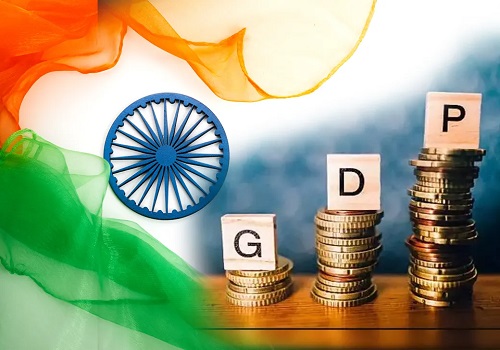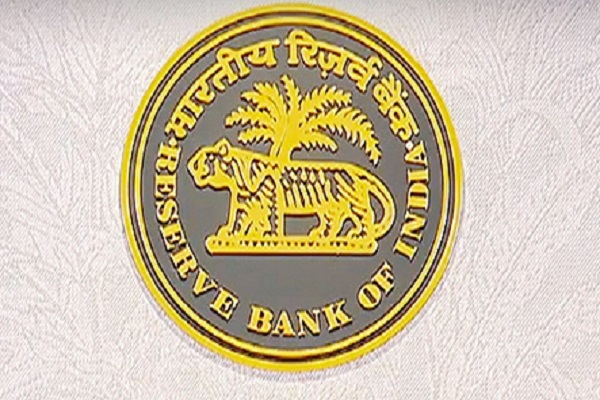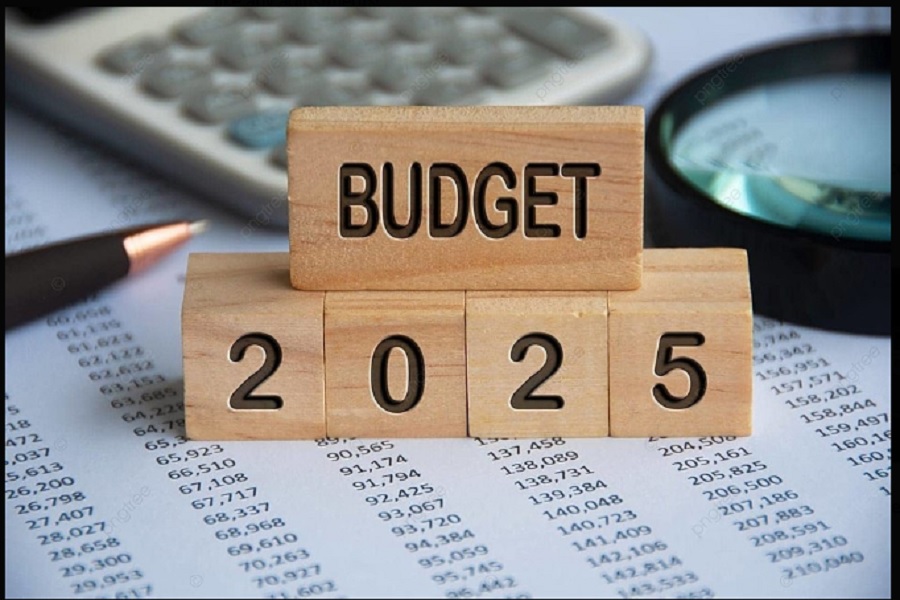India Strategy : Corporate profit-to-GDP: Standing tall at a 17-year high! by Motilal Oswal Financial Services Ltd

Corporate profit-to-GDP: Standing tall at a 17-year high!
Defying all odds: As the world grapples with geopolitical challenges, sluggish growth, high inflation, and elevated interest rates, India’s macroeconomic indicators present a contrasting narrative. The country is experiencing strong GDP growth, a stable currency, and moderating inflation and interest rates, alongside robust corporate earnings. For the first time in many years, corporate earnings are tracking GDP growth, resulting in the corporate profit-to-GDP ratio remaining flat YoY at a 17-year high of 4.7% in FY25. Thisstable ratio was primarily driven by a healthy 10.5% YoY profit growth in FY25, building on a strong earnings base of 30% YoY in FY24, which was broadly aligned with the year’s revenue growth. This performance was bolstered by a robust GDP growth of 9.8% YoY in FY25, following a high base of 12% YoY growth in FY24.
Analyzing India's corporate profit-to-GDP ratio: We take a closer look at the corporate profit-to-GDP ratio achieved by India’s listed corporate sector. Our analysis examines corporate earnings as a percentage of GDP in greater detail, using the Nifty-500 as a proxy for corporate earnings, as this index represents ~90% of India’s market capitalization.
India’s corporate profit-to-GDP ratio in FY25: Under the lens
* In 2025, the corporate profit-to-GDP ratio for the Nifty-500 Universe remained at 4.7%, marking a 17-year high. Notably, for listed India Inc., the ratio stood at 5.1%, at a 14-year high. The sustained profit-to-GDP ratio for the Nifty-500 was positively influenced by sectors such as Telecom (which shifted from being a negative contributor for the past seven years to a positive contributor in FY25), PSU Banks(with a 0.07% increase in the ratio), Healthcare (a 0.04% rise), Consumer (a 0.04% increase), Metals (a 0.03% rise), and Infrastructure (a 0.2% increase). In contrast, sectors that experienced a decline in the ratio included Oil & Gas (a 0.28% decline), Automobiles (a dip of 0.03%), Cement (a decline of 0.02%), Utilities (a dip of 0.02%), Private Banks (a decline of 0.01%), and Retail (a dip of 0.01%).
* The top-5 sectors contributed 71% to the aforesaid ratio, with BFSI (1.84% of the GDP), Oil & Gas (0.51%), Technology (0.40%), Metals (0.34%), and Automobiles (0.32%) being the key contributors. In contrast, e-commerce was the only sector that contributed adversely to the corporate profit-to-GDP ratio.
* The corporate profits for the Nifty-500 universe experienced double-digit growth, rising 10.5% YoY in FY25. This growth was notable given the high base of +30.5% in FY24 and clocking a 30.3% CAGR over the past five years. This achievement occurred in a challenging year characterized by weak consumption, a slowdown in government spending during 1HFY25 amid elections, and volatile exports resulting from heightened global uncertainties.
* Meanwhile, nominal GDP growth remained strong in 2HFY25 and exceeded market expectations. Nominal GDP expanded 9.8% YoY in FY25, although this was slower than corporate profit growth during the year. It recorded a 10.5% CAGR over the past five years.
Mid- and small-caps add to the ratio as large-caps’ weight slips
* According to SEBI's categorization, large-, mid-, and small-cap stocks accounted for 3.51%, 0.81%, and 0.42% of the total Nifty-500’s corporate profit-to-GDP ratio, respectively.
* The Nifty-500 ratio was driven higher by mid- and small-caps, while large-caps offset these gains. The mid- and small-caps ratio grew to 0.81% and 0.42%, respectively, in FY25 (from 0.75% and 0.41% in FY24). Large-caps witnessed a dip to 3.51%, down marginally from the 16-year high of 3.55% recorded in FY24.
* The mid- and small-cap shares have experienced a nearly continuous increase in the corporate profit-to-GDP ratio since the lows of 2020, rising 6.2x and 1.6x, respectively. This marks a reversal from the period between 2008 and 2020, during which mid-caps faced a significant decline, while small-caps exhibited range-bound performance. Large-cap stocks have also posted substantial gains since the 2020 lows, more than doubling in value, in contrast to their earlier trend of sustained weakness from the highs of 2008 through 2020.
Private and MNC companies bolster the ratio; PSUs weigh it down
* We analyze India’s corporate profit-to-GDP distribution across three categories of ownership, i.e., 1) Private Corporate, 2) PSU Corporate, and 3) MNCs.
* On an ownership basis, the corporate profit-to-GDP ratio for Private companies within the Nifty-500 reached an all-time high of 2.8% in FY25, up from 2.6% in FY24. The ratio for PSUs dipped marginally to 1.6% in FY25 from 1.8% in FY24. For MNCs, notably, the ratio hit an all-time high of 0.31% in FY25 (0.29% in FY24).
* PSUs recorded the sharpest increase in the corporate profit-to-GDP ratio since the lows of 2020, fueled by a broad-based earnings recovery, particularly among PSUs Banks, Insurance, and Oil & Gas sectors. The ratio surged approximately threefold to reach 1.6% in 2025 from 0.5% in 2020. In comparison, Private and MNC companies within the Nifty-500 universe also recorded notable gains, with their ratios surging 2.2x to 2.8% and 1.2x to 0.3% in 2025 (from 1.3% and 0.3% in 2020), respectively.
Analyzing two decades of corporate profit-to-GDP trends
We examined the peaks and troughs in the corporate profit-to-GDP ratio over the past two decades, breaking them down into distinct phases of expansion and contraction.
* We segregate the 2003 to 2025 period into three phases: 1) 2003-08, 2) 2008- 20, and 3) 2020-25.
* During Phase 1 (2003-08), the corporate profit-to-GDP ratio almost doubled to 5.2% from 2.7%, with profits of Nifty-500 compounding at a solid 30% CAGR.
* During Phase 2 (2008-20), the downturn in domestic corporate earnings led to a compression in the Nifty-500 profit-to-GDP ratio to 2.1% from 5.2%.
* Despite the pandemic-led slowdown and subdued economic recovery during Phase 3 (2020–25), corporate profits witnessed a strong resurgence from the lows. This recovery drove the corporate profit-to-GDP ratio to a 17-year high of 4.7% in 2025 (above the long-period average of 3.7%). Over this period, Nifty-500 companies delivered an impressive 30.3% profit CAGR, with a YoY growth of 10.5% in FY25.
Corporate profit-to-GDP ratio poised for further expansion
* India’s nominal GDP grew 10.8% YoY in 4QFY25, marking the highest growth in four quarters. This resulted in an overall growth of 9.8% for FY25. This healthy performance reflects the strengthening domestic macroeconomic conditions, which are likely to sustain and support corporate earnings going forward.
* Although corporate profit growth moderated in FY25 due to a high base set in FY24 and other factors mentioned earlier, we expect a gradual recovery going ahead. This rebound is likely to be driven by increased government spending compared to FY25, a favorable monsoon season, and coordinated policy measures by the government and the RBI, including tax incentives and an accommodative monetary policy that should help stimulate consumer spending.
* Consequently, corporate earnings are projected to outpace GDP growth, with Nifty earnings forecasted to grow 12% and 15% YoY in FY26E and FY27E, respectively. This growth is anticipated alongside a nominal GDP growth rate of 10.8% YoY in FY26, which will further enhance the corporate profit-to-GDP ratio in the coming years.
For More Research Reports : Click Here
For More Motilal Oswal Securities Ltd Disclaimer
http://www.motilaloswal.com/MOSLdisclaimer/disclaimer.html
SEBI Registration number is INH000000412





















